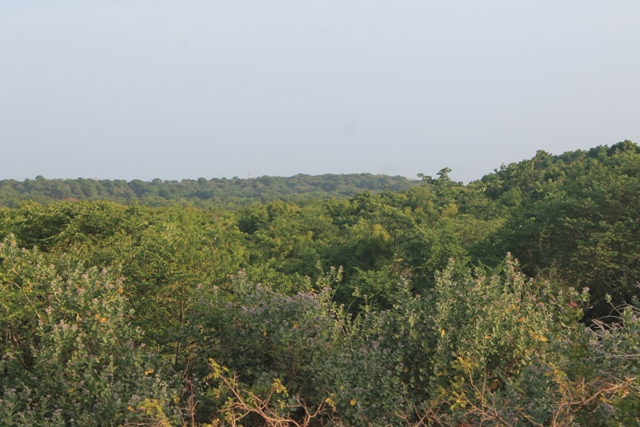Dr Ananda Mallawatantri, Country Representative, IUCN Sri Lanka visits Siam City Cement’s Aruvakalu Quarry Site
In 2008, IUCN Sri Lanka partnered with Siam City Cement (Lanka) Ltd (then Holcim Lanka) for two main purposes: to rescue and release fauna and flora that will be dislocated during mining process and to advice the Company on restoration of mined pits with environmentally sound techniques.

Restored area
Photo: Sampath de Alwis Goonatilake, IUCN Sri Lanka
The project focused on the Aruwakalu area where extraction of limestone for cement production takes place. The quarrying process involves the excavation, blasting and clearing of natural habitat, and thus impact the biodiversity and ecology of the area. Many species become dislocated or threatened during this process.
In order to get the baseline, IUCN in 2008 conducted a biodiversity survey of the entire quarry site. IUCN then collaborated with the Company to rescue and release the species to be dislocated. Additionally, IUCN also provided advice on rehabilitating the mined areas with environmentally sound techniques. This was followed by monitoring of rehabilitated pits from 2009 to date.
From 2008 to 2016 a total of 11,112 individuals belonging to 82 species have been rescued and translocated. Since 2009, under technical expertise of IUCN Sri Lanka, a total of 60 hectares in the Aruwakalu quarry site has been restored.
Monitoring results revealed that 100 plant species including planted and naturally established belonging to 34 families have been recorded within the 12 monitoring sites. In 2016, faunal diversity in the rehabilitated area of the Quarry Site comprised of land snails, butterflies, dragon flies, reptiles, birds and mammals. The faunal species richness data from 2009 to 2016 revealed the increase in the total number of species of the above categories from 63 to 150. Similarly, flora species during the same period has increased from 29 to 100.
Dr Ananda Mallawatantri, Country Representative IUCN Sri Lanka recently visited the Aruwakalu site with Mr Sampath Goonatilake, Senior Programme Officer- Biodiversity and Ms Nadine Anderson, Intern at IUCN Sri Lanka to witness the first hand experience of restoration and monitoring of arid zone forest restoration in Sri Lanka.
According to Dr. Mallawatantri, the same ecological restoration approach could be applied to many other locations where minerals being harvested for construction. The process of restoration involved, removing and saving the top soil, harvesting the minerals/soil for the intended purpose and re-vegetating the location using the saved top soil. The top soil should not be removed out of the site as it is too valuable to use in a filling. At the same time, top soils have roots and other organic material that decay with time causing problems. IUCN recommends to develop a land restoration protocol that can be used in infrastructure development based on the years of experience during the Siam City-IUCN partnership.
